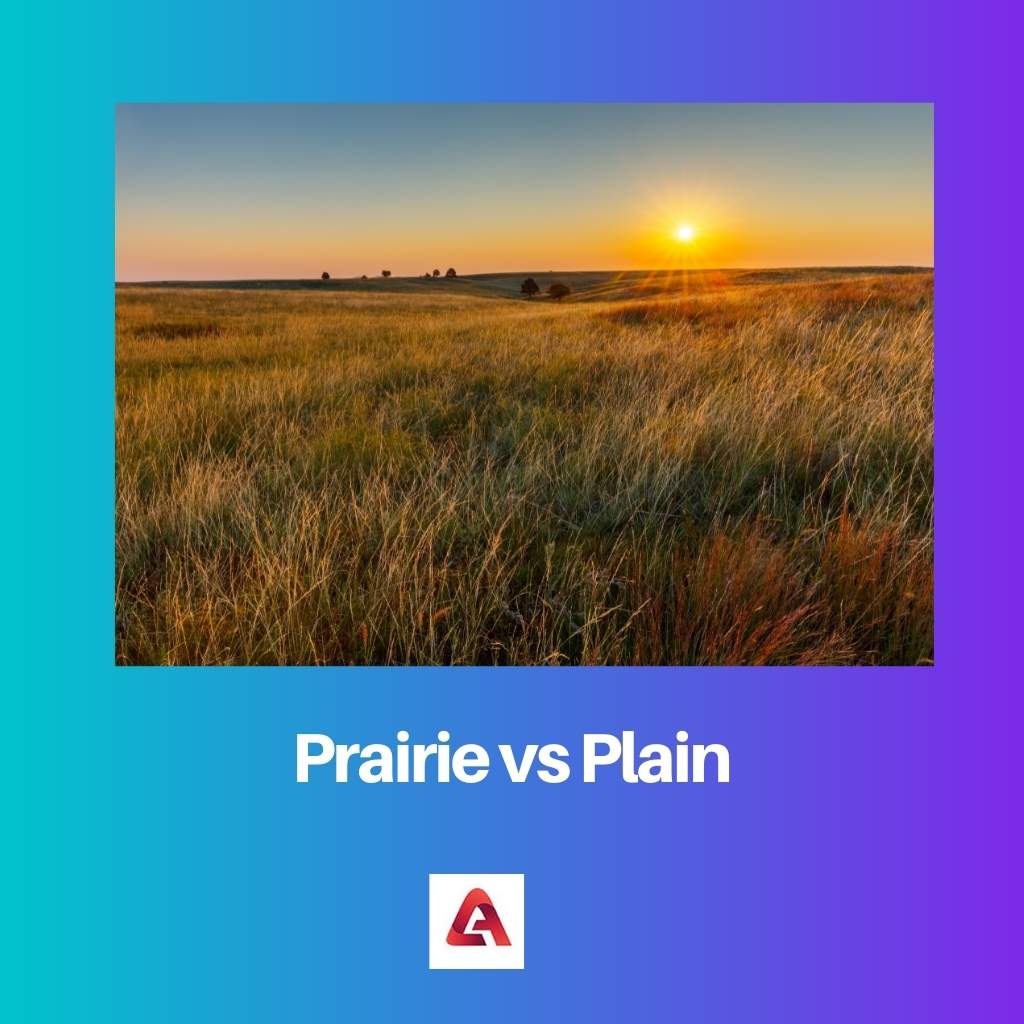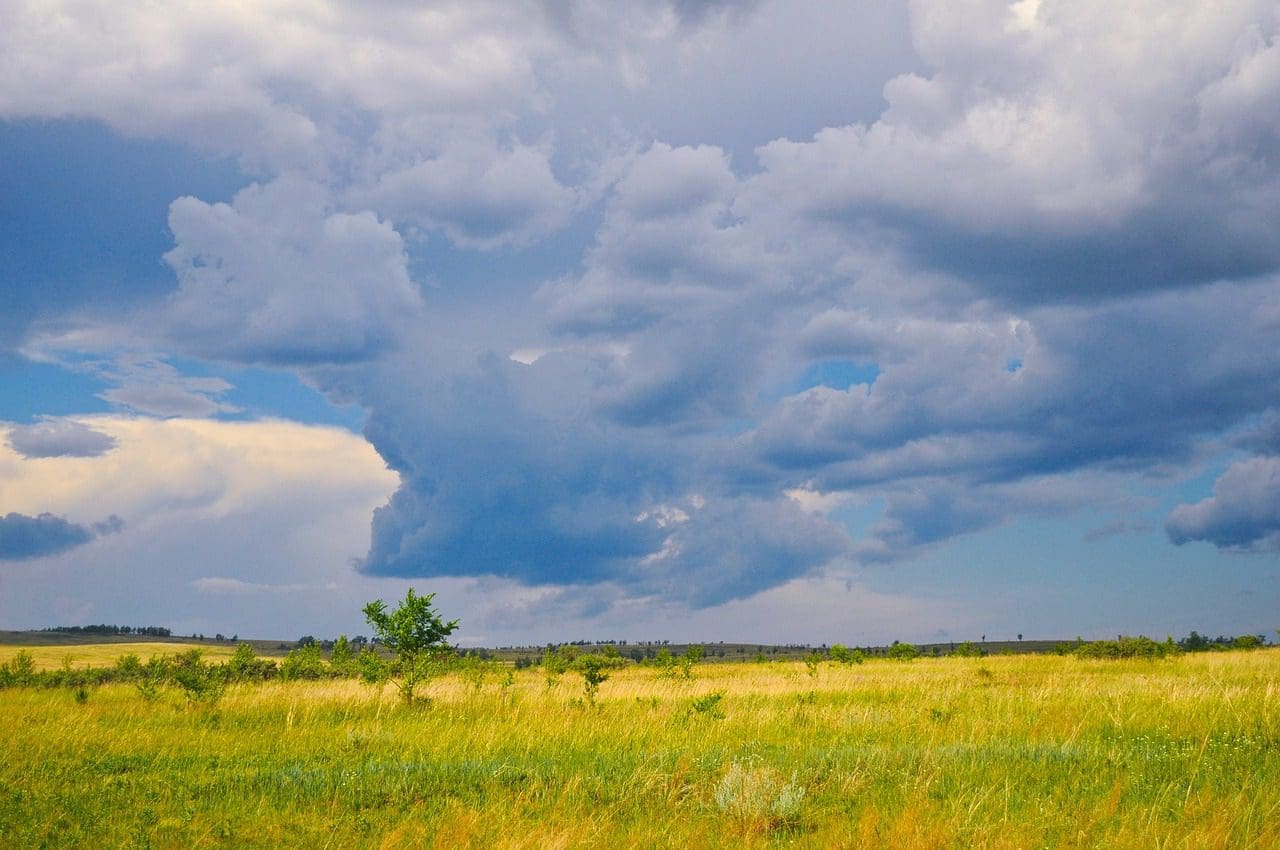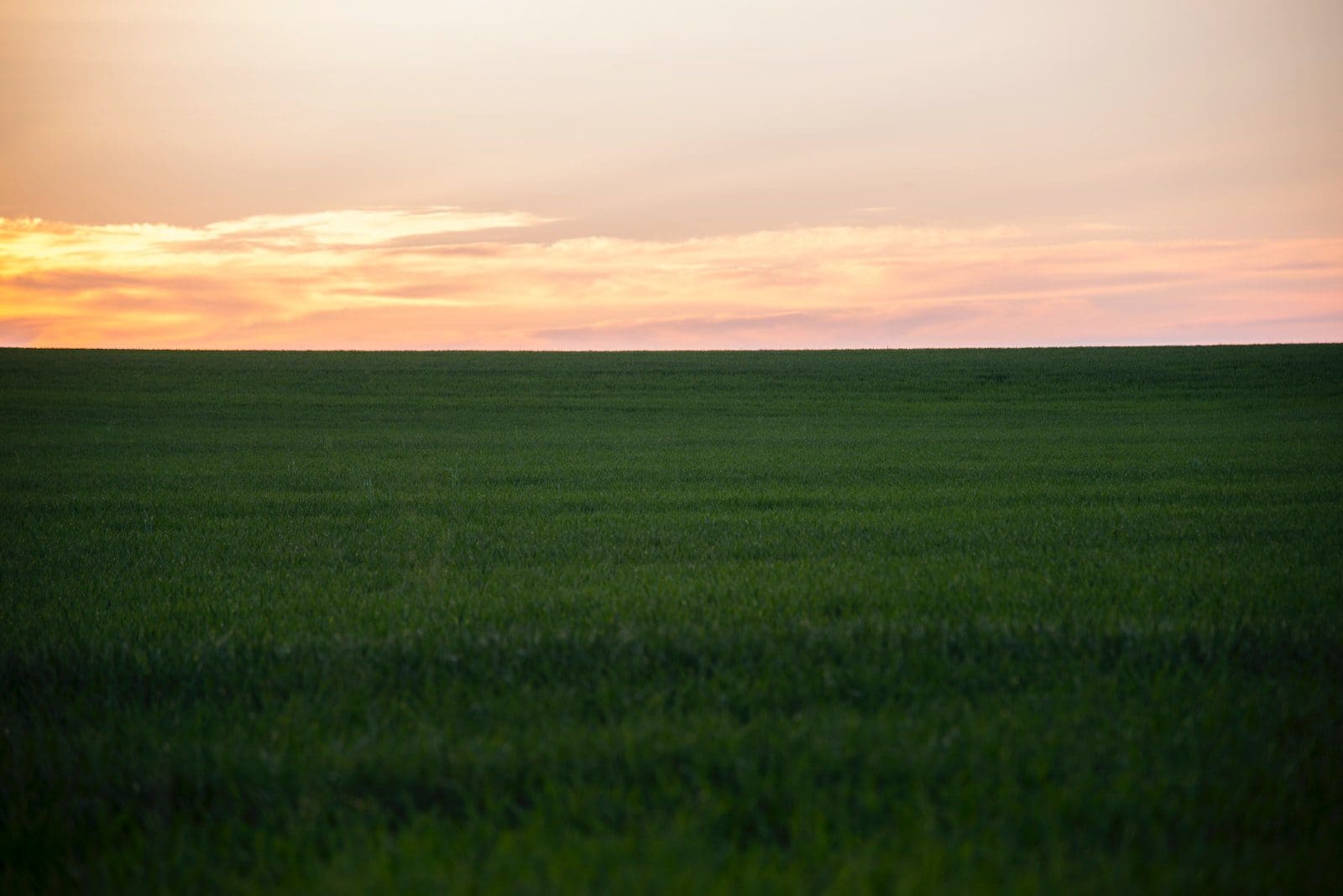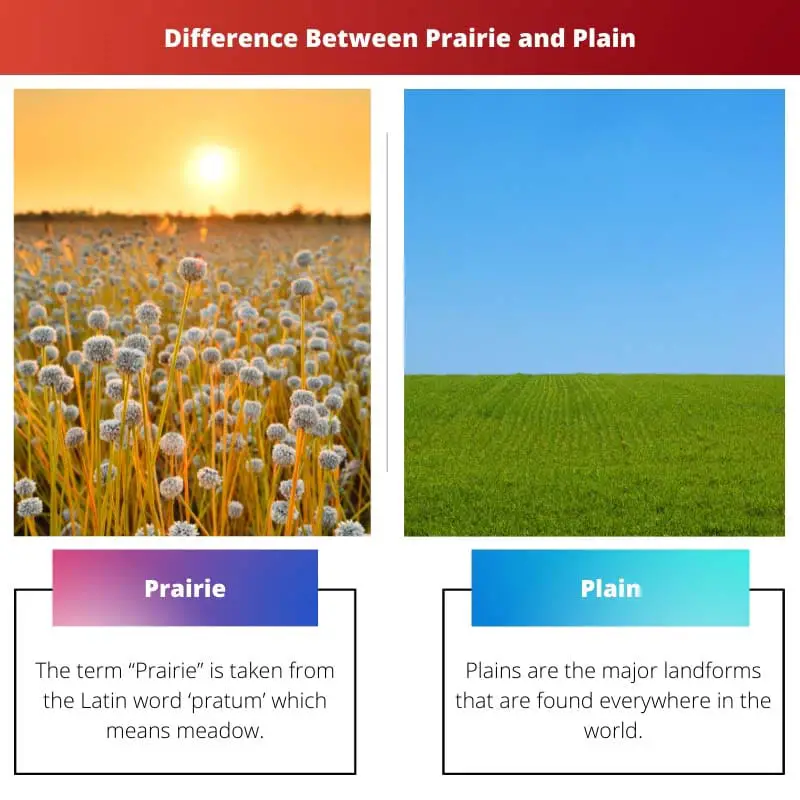Land is a place on earth that is not a part of water. All the activities which humans do are done on land only, such as habitat, agriculture, mining, excavating natural resources etc.
Certain life species which earlier used to live in water have now become terrestrial(plants and animals) which live on land.
Division of land and water is very important for human beings. Prairie and Plain are also types of land only. Although they seem similar, there are certain differences between them.
Key Takeaways
- Prairies are large flat grassland areas with few trees, while plains are expansive regions of flat land with no significant natural features such as mountains or hills.
- Prairies are found in areas with a drier climate, while plains can be found in various climates and ecosystems.
- While prairies are characterized by tall grasses and a diverse range of plant and animal life, plains may be covered in grass, shrubs, or even desert-like landscapes.
Prairie vs Plain
Prairies are vast regions of flat terrain that are covered with grasses and wildflowers. They are found in drier regions. Plains are also characterized by their flat terrain but may have different vegetation types depending on their location and climate.

Prairie is an ecosystem where certain species of living organisms live, and it is a part of savannas, temperature grasslands and shrublands biome as classified by ecologists.
A Plain is determined as Praire based on moderate rainfall, the composition of grasses, similar temperate climates, herbs, and shrubs, rather than trees, and as the dominant vegetation type.
Prairies are most commonly found in the regions of North America. In the USA, almost all the states constitute Prairies. They are very rich in biodiversity.
A plain is flat land that is treeless, and there is no elevation in the plain. Plains can be seen near mountains, coastal areas, uplands, lowlands, plateaus or along valleys.
In the case of Valleys, Plains are enclosed with two sides, and in other areas of plains, they may have cliffs, hills or mountains on a closure. In a region, if there is more than one plain, then it is termed a gap or pass.
Plains can be found on almost every continent, and it constitutes one-third of the land. They are very important for agriculture and livestock.
Comparison Table
| Parameters of Comparison | Prairie | Plain |
|---|---|---|
| Types | Wet, Dry, Mesic | Depositional, Erosional, Structural |
| Formation | Till and loess deposits | Sedimentation, erosion or lava. |
| Area | North America | All continents except Antarctica |
| Largest | The Great Plains | West Siberian Plain |
| Importance | Rare native habitat for insects, reptiles, birds, butterflies, and other small wildlife. | For agriculture and livestock. |
What is Prairie?
The term “Prairie” is taken from the Latin word ‘pratum’ which means meadow. Prairies are most commonly found in North America. Prairie’s formation in North America occurred when there was an uplift in the Rocky Mountains.
Prairie was formed when there was a disposition of Glaciers some 1,10,000 years ago. Soils of prairies consist of till(glacial deposits) and loess deposits. Tallgrass Prairie had evolved some 10,000 years ago when fire and grazing took place.
Early humans and animals like bison, elk, and white-tailed deer used to wander around these grasslands. Due to hunting, lighting fire and grazing animals, there was the formation of prairies and a diversity of species.
The fertility of the Prairies is very much good even though it had a drought and torrential rains. It survived, and there was no soil erosion. Prairies that are found in North America are classified into three types: Dry, Wet, and Mesic.
Dry prairies have dry soil, and it can be seen on uplands and slopes. It doesn’t have much vegetation because of the lack of rain. These dry prairies are found in the Sothern Canada region.
Wet Prairies have wet soil, which is very moist, and they have poor drainage. But it has excellent farming soil. Mesic Prairies are best because it has good drainage and soil and is used for agriculture. It also comes under endangered prairies.

What is Plain?
Plains are the major landforms that are found everywhere in the world. It can be natural as well as artificial. It covers one-third of the land’s area.
The formation of plains takes place either through the process of sedimentation by ice, wind, or water or by erosion that is formed by mountains and hills or by flowing lava.
Biomes that are found on Plains consist of savannah (tropical), grassland (temperate or subtropical), tundra(polar) and steppe(semi-arid). In some cases, rainforests and deserts can also be considered as a part of plains.
Plains are used for agricultural processes as the fertility of the soil is very rich in these areas. Because sediments deposit soil, they are a flat piece of land that helps in the production of crops, and it is also considered good for grazing livestock as they support grasslands.
Prairies can also be said as plain. Plains occur in uplands, lowlands, valleys, mountains, plateaus, coastal areas etc.
There are various types of plains, such as Depositional, Structural and Erosional. Depositional Plain consists of alluvial plains, which are formed due to rivers. There are Flood Plain, Scroll Palin, and Underwater Plain, which is on the deep ocean floor.
Glacial plains are formed because of glaciers due to gravity. There is also outwash plain, till Plain, lava plain etc. Structural Plains are formed when there is a disturbance in the horizontal surface of the earth.
It is found extensively in the lowlands. Erosional plains are formed due to erosions caused by wind, glaciers, water etc.

Main Differences Between Prairie and Plain
- Prairie is classified into three types: Wet, Dry, and Mesic. Plains also have various types like Depositional, Erosional, and Structural, and then they have sub-types as well.
- Prairie is formed due to Till, i.e., glacial deposits and loess deposits. Plains are formed through a process of Sedimentation, erosion or lava.
- Prairie is found in areas of North America. Plains are found in all continents except Antarctica and Arctic circles.
- The largest Prairie in the world is The Great Plains, found in Central North America. The largest Plain in the world is the West Siberian Plain found in Russia.
- Prairies are important for rare native habitats for insects, birds, butterflies, and other small wildlife, and they are adaptable to climate. Plains are important for agricultural purposes and livestock.


The distinction made between the types of prairies and plains has been very enlightening. It’s fascinating to learn about the formation and characteristics of each. Thank you for sharing this knowledgeable content.
I couldn’t agree more, Abbie. The depth of information and the clear comparison between prairies and plains are truly enlightening.
The detailed explanations and geographical significance of prairies and plains are truly noteworthy. This article has been a great source of learning for me. Thank you for sharing this valuable knowledge.
I share your sentiment, Glewis. The level of detail and knowledge presented here is truly commendable.
The ecological significance and importance of prairies and plains for biodiversity and agriculture have been very well-explained in this article. I’ve gained a deeper understanding of these landforms. Thank you.
I completely agree, Shannon. The information shared here is truly insightful and valuable.
The coverage of prairies and plains in terms of their formation, characteristics, and ecological significance has been incredibly thorough and educational. I’ve learned a great deal from reading this. Thank you for sharing.
I completely agree, Hstewart. The level of detail and knowledge presented here is truly commendable.
Absolutely, Hstewart. This article has provided a deep and comprehensive understanding of prairies and plains.
The comprehensive comparison and explanation of the different types of prairies and plains are truly impressive. This has greatly expanded my knowledge on this topic. Thank you for sharing.
I share the same sentiment, Christian. This is indeed a very informative and well-presented article.
The in-depth description of prairies and plains, along with their formations and ecological significance, has been extremely educational. I’ve learned a lot from this article. Thank you.
I couldn’t agree more, Erin. The information shared here is truly enriching and valuable.
The detailed comparison table and the clear explanations of prairies and plains have been very insightful. This article has expanded my understanding of these landforms. Thank you for providing such valuable content.
I completely concur, Mohammed. The level of detail and clarity in this article is truly commendable.
The historical and ecological information about prairies and plains has been extremely comprehensive and informative. This is an outstanding piece of work. Thank you for sharing this valuable insight.
Absolutely, Mandy. The depth of historical context and ecological significance provided in this article is truly exemplary.
I really appreciate the detailed explanation about the differences between prairies and plains, as well as the formation and characteristics of each type of land. This is very informative and enriching, thank you!
I completely agree with you, Gray. The information provided is quite valuable and well-explained.
The historical and geographical formation of prairies and plains, as well as their ecological importance, have been very well-presented in this article. I’ve found this to be an enlightening piece of work. Thank you.
I share the same sentiment, Bbrown. This article has been truly informative and enriching.